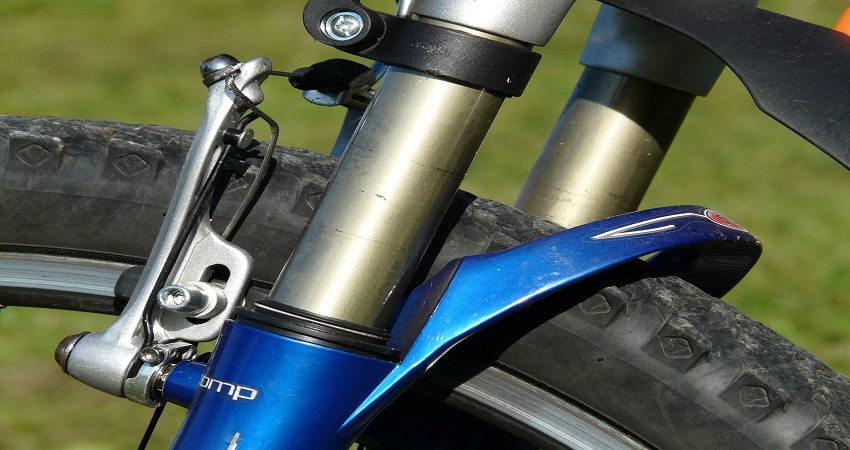No, you cannot put 20-inch wheels on a 24-inch bike. It is not compatible due to the difference in wheel sizes.
Introducing different wheel sizes to a bicycle can significantly affect its performance and overall stability. This is particularly crucial when it comes to modifying the size of the wheels. While it may seem tempting to switch out the wheels for a different size, it is essential to stick to the appropriate measurements.
A 20-inch wheel cannot be used on a 24-inch bike due to the incompatibility between the two sizes. This is because the larger wheel size may cause issues with the bike’s frame and brakes, compromising its safety and functionality. Therefore, it is crucial to ensure that any modifications to a bike’s wheels are within the appropriate and recommended measurements.
Compatibility Of Wheel Sizes
Putting 20-inch wheels on a 24-inch bike may affect the compatibility and performance of the bike. It is important to consider the frame size and tire clearance before making any modifications.
When it comes to customizing your bike, one consideration you may be wondering about is whether you can put 20-inch wheels on a 24-inch bike. In this article, we will dive into the compatibility of different wheel sizes and answer the question at hand.
Difference Between 20-inch And 24-inch Wheels
The main difference between 20-inch and 24-inch wheels lies in their diameter measurement. A 20-inch wheel has a diameter of approximately 20 inches, while a 24-inch wheel has a diameter of approximately 24 inches. This disparity in size may seem small, but it can have significant implications for the overall performance and fit of your bike.
- A 20-inch wheel is typically found on smaller bikes, such as BMX or children’s bikes, and offers enhanced maneuverability and agility.
- A 24-inch wheel, on the other hand, is more commonly found on larger bikes, such as mountain bikes, and provides greater stability and a smoother ride.
Can You Put 20-inch Wheels On A 24-inch Bike?
The short answer is no, you cannot put 20-inch wheels on a 24-inch bike. Wheel compatibility is crucial for proper bike function and safety. Trying to fit smaller wheels onto a bike designed for larger wheels can lead to numerous issues.
Some of the problems that may arise include:
- Frame compatibility: The frame geometry of a 24-inch bike is designed to accommodate a larger wheel size. Trying to fit smaller wheels might result in misalignment or interference with other components.
- Ground clearance: Smaller wheels on a 24-inch bike can negatively affect ground clearance, making it harder to navigate uneven terrain.
- Braking efficiency: The braking system of a bike is designed to work optimally with a specific wheel size. Fitting smaller wheels can affect braking performance and compromise your safety.
In conclusion, it’s best to stick with the recommended wheel size for your bike.
Considerations For Changing Wheel Sizes
If you are considering changing wheel sizes on your bike, it’s important to keep a few factors in mind:
- Bike type: Different types of bikes are designed for specific wheel sizes. Ensure you choose a wheel size that is compatible with your bike’s intended use.
- Fork and frame compatibility: Check whether your bike’s fork and frame can accommodate the desired wheel size without compromising safety or functionality.
- Tire clearance: Verify that the new wheel size allows enough space for the appropriate tires, considering clearance for mudguards, brakes, and other components.
- Performance and ride quality: Changing wheel sizes can impact the bike’s overall performance, such as speed, maneuverability, and comfort. Consider your personal preferences and riding style before making any modifications.
By carefully considering these factors, you can make an informed decision about changing wheel sizes without compromising the safety and performance of your bike.
Effects Of Changing Wheel Sizes
The effects of changing wheel sizes need to be considered when putting 20-inch wheels on a 24-inch bike. This alteration can significantly impact the bike’s performance, including handling, stability, and ride comfort. It is important to consult with a professional to ensure compatibility and avoid potential issues.
Impact On Bike Performance
When it comes to changing the wheel sizes of a bike, it is important to consider the effects it will have on the bike’s performance. The size of the wheels can significantly impact how the bike rides and handles. One major factor to consider is the overall weight of the bike. Larger wheels tend to be heavier, which can affect the bike’s acceleration and maneuverability. The added weight can make it more difficult to quickly change direction or navigate tight corners.
Moreover, the larger wheels can also impact the bike’s gearing. Since the circumference of the wheel changes with different sizes, the gearing ratio can be affected. This means that the bike may feel a bit different in terms of how it accelerates and maintains speed.
Additionally, the wheel size can also have an impact on the bike’s efficiency. Larger wheels have a larger contact patch with the ground, which can provide more traction and stability. However, they can also create more rolling resistance, making it slightly more difficult to pedal the bike.
Handling And Stability Changes
The handling and stability of a bike are closely tied to the size of the wheels. When changing from 24-inch to 20-inch wheels, there are a few key differences to consider. One of the main changes is the height of the bike. Smaller wheels will lower the overall height of the bike, which can affect how it feels when riding. The lower center of gravity can make the bike feel more stable, especially when taking corners or riding on uneven terrain.
Moreover, the smaller wheels can also impact the bike’s maneuverability. With a shorter wheelbase, the bike may feel more nimble and responsive. This can be advantageous for riders who enjoy quick and agile handling. However, it may also require some adjustment for riders accustomed to larger wheels.
Aesthetics And Appearance
In addition to the performance and handling changes, changing the wheel sizes can also have an impact on the aesthetics and appearance of the bike. A smaller wheel size, such as 20 inches, can give the bike a more compact and sporty look. This may be desirable for riders who prefer a sleek and aggressive appearance.
On the other hand, larger wheel sizes, such as 24 inches, can give the bike a more substantial and robust appearance. Moreover, it is important to consider the compatibility of the new wheel size with the bike frame and fork. Some frames and forks are designed to accommodate specific wheel sizes, so it is important to ensure that the desired wheel size can fit properly without interfering with other components or compromising safety.
In conclusion, changing the wheel size of a bike can have various effects on its performance, handling, and aesthetics. It is important to carefully consider these factors before making any modifications to ensure the overall riding experience is optimized. Remember to also consult with a professional if you are unsure about the compatibility and safety of different wheel sizes for your specific bike model.
Possible Modifications And Adjustments
Can you put 20-inch wheels on a 24-inch bike? This is a question that many cycling enthusiasts may have pondered. While it may seem counterintuitive to mix and match wheel sizes, there are actually certain modifications and adjustments that can be made to make this possible. In this article, we will explore three key areas where modifications may be needed: changing the frame and fork, modifying the brakes, and adjusting the gearing and chain length.
Changing The Frame And Fork
When considering installing 20-inch wheels on a 24-inch bike, one of the first modifications to consider is changing the frame and fork. It is important to note that this can be a complex process and may require professional assistance. The frame and fork of the bike need to be compatible with the smaller wheel size, as they will need to accommodate the smaller diameter. Additionally, the brakes and other components attached to the frame and fork may also need to be adjusted or replaced to ensure proper functionality.
Modifying The Brakes
The next area of focus when converting a 24-inch bike to accommodate 20-inch wheels is the brakes. The brakes on the bike are designed to work with a specific wheel size, so modifications will be necessary to ensure that the smaller wheels can still be effectively stopped. This may involve adjusting the brake pads, calipers, or levers to ensure proper alignment and responsiveness. It is crucial to prioritize safety when making these modifications, as proper braking is essential for a safe and controlled riding experience.
Adjusting Gearing And Chain Length
Lastly, when putting 20-inch wheels on a 24-inch bike, adjustments to the gearing and chain length are necessary to maintain optimal performance. The smaller wheel size will affect the bike’s overall gear ratio, potentially resulting in a higher gear ratio and increased difficulty in pedaling. To counteract this, adjusting the gearing by replacing the cassette or chainrings can help restore the desired gear ratio. Additionally, the chain length may need to be modified to accommodate the smaller wheel size, ensuring smooth and efficient power transfer between the pedals and wheels.
In conclusion, while it is possible to put 20-inch wheels on a 24-inch bike, several modifications and adjustments need to be made to ensure proper compatibility and functionality. Changing the frame and fork, modifying the brakes, and adjusting the gearing and chain length are key areas to focus on when undertaking this conversion. It is crucial to approach these modifications with caution and consult with a knowledgeable professional to ensure a safe and successful outcome.
Risks And Limitations
When it comes to modifying your bike, one popular question that often arises is whether you can put 20-inch wheels on a 24-inch bike. While it might seem like a simple swap, it’s important to consider the risks and limitations before making any changes. This article explores the potential safety concerns, potential damage to the bike, and the implications it may have on voiding warranty and manufacturer recommendations.
Safety Concerns
Swapping out the wheels on your bike can have a significant impact on its overall safety. A mismatch in wheel sizes can affect the handling and stability of the bike, especially during turns and maneuvers. This can lead to a loss of control and increase the risk of accidents. It’s crucial to ensure that the new wheel size maintains the bike’s proper geometry and doesn’t compromise its structural integrity.
Potential Damage To The Bike
Putting 20-inch wheels on a 24-inch bike can cause various potential damages. Firstly, the increased wheel diameter can lead to improper alignment with the frame and fork, resulting in misalignment of the brakes or tire clearance issues. Secondly, the change in wheel size can increase the stress on the bike’s components, such as the frame, fork, and drivetrain. This added stress can potentially lead to premature wear and failure of these parts over time.
Moreover, the smaller wheels may not be capable of handling the same load-bearing capacity or shock absorption as the original larger wheels. This can impact your riding experience, especially if you frequently ride over rough terrains or encounter obstacles.
Voiding Warranty And Manufacturer Recommendations
It’s important to note that modifying your bike in a way that deviates from the manufacturer’s recommendations can potentially void its warranty. Warranty claims can be denied if the bike has been altered or modified in any way that compromises its intended design and function. Putting smaller wheels on a bike intended for larger ones would undoubtedly qualify as a deviation from the manufacturer’s specifications.
In conclusion, while it might be tempting to experiment with different wheel sizes on your bike, there are significant risks and limitations to consider. Safety concerns, potential damage to the bike, and the possibility of voiding warranty and manufacturer recommendations should all be thoroughly examined before making any changes. It’s always advisable to consult a professional bike mechanic or the manufacturer to ensure any modifications are done safely and preserve the bike’s integrity.
Considerations For Riding Conditions
Off-road Riding
When it comes to off-road riding, the terrain can be rugged and challenging. Therefore, it is crucial to choose the right wheel size for your 24-inch bike. Putting 20-inch wheels on a 24-inch bike may affect your off-road experience and potentially pose safety risks.
In off-road riding, larger wheels offer advantages such as improved stability and better traction. They can easily roll over obstacles like rocks, roots, and uneven surfaces, ensuring a smoother and more controlled ride. Opting for 20-inch wheels on a 24-inch bike may compromise these benefits, making it harder to maneuver and navigate through rough terrain.
If you frequently enjoy off-road adventures, it is recommended to stick with the appropriate wheel size for your 24-inch bike. This will ensure optimal performance and safety, allowing you to confidently tackle challenging trails with ease.
Road And Urban Riding
If your primary focus is road and urban riding, the considerations for wheel size differ slightly. While larger wheels may provide enhanced stability and speed, they are not always necessary for these riding conditions.
Road and urban riding typically involve smooth surfaces, including pavement and concrete. Smaller wheels, like the standard 24-inch size, can still provide a comfortable and efficient ride in these environments.
However, if you prefer the aesthetics and feel of 20-inch wheels on your 24-inch bike for road or urban riding, it may be possible with the right adjustments. Consulting with a professional bike mechanic or a knowledgeable expert can help you determine if this modification is suitable for your specific bike and riding style.
Choosing The Suitable Wheel Size
When it comes to selecting the suitable wheel size for your 24-inch bike, there are a few factors to consider:
- The riding conditions you commonly encounter,
- Your riding style and preferences,
- The type of bike you own,
- Consulting with a professional bike mechanic or expert for personalized advice.
Keeping these factors in mind, you can make an informed decision about whether to put 20-inch wheels on your 24-inch bike, depending on your riding conditions and overall biking goals.
Frequently Asked Questions On Can You Put 20-inch Wheels On A 24-inch Bike?
Can You Put 20-inch Wheels On A 24-inch Bike?
No, you cannot put 20-inch wheels on a 24-inch bike. The wheel size should match the frame size for proper performance and safety. Using mismatched wheels can affect the bike’s handling, stability, and overall ride quality. It’s essential to choose wheels that are compatible with the bike’s frame size.
Conclusion
It is not recommended to put 20-inch wheels on a 24-inch bike. While it may seem like a possible option, this modification can negatively impact the bike’s performance and stability. It is essential to consider the compatibility between the bike frame, fork, and wheels to ensure a safe and enjoyable riding experience.



